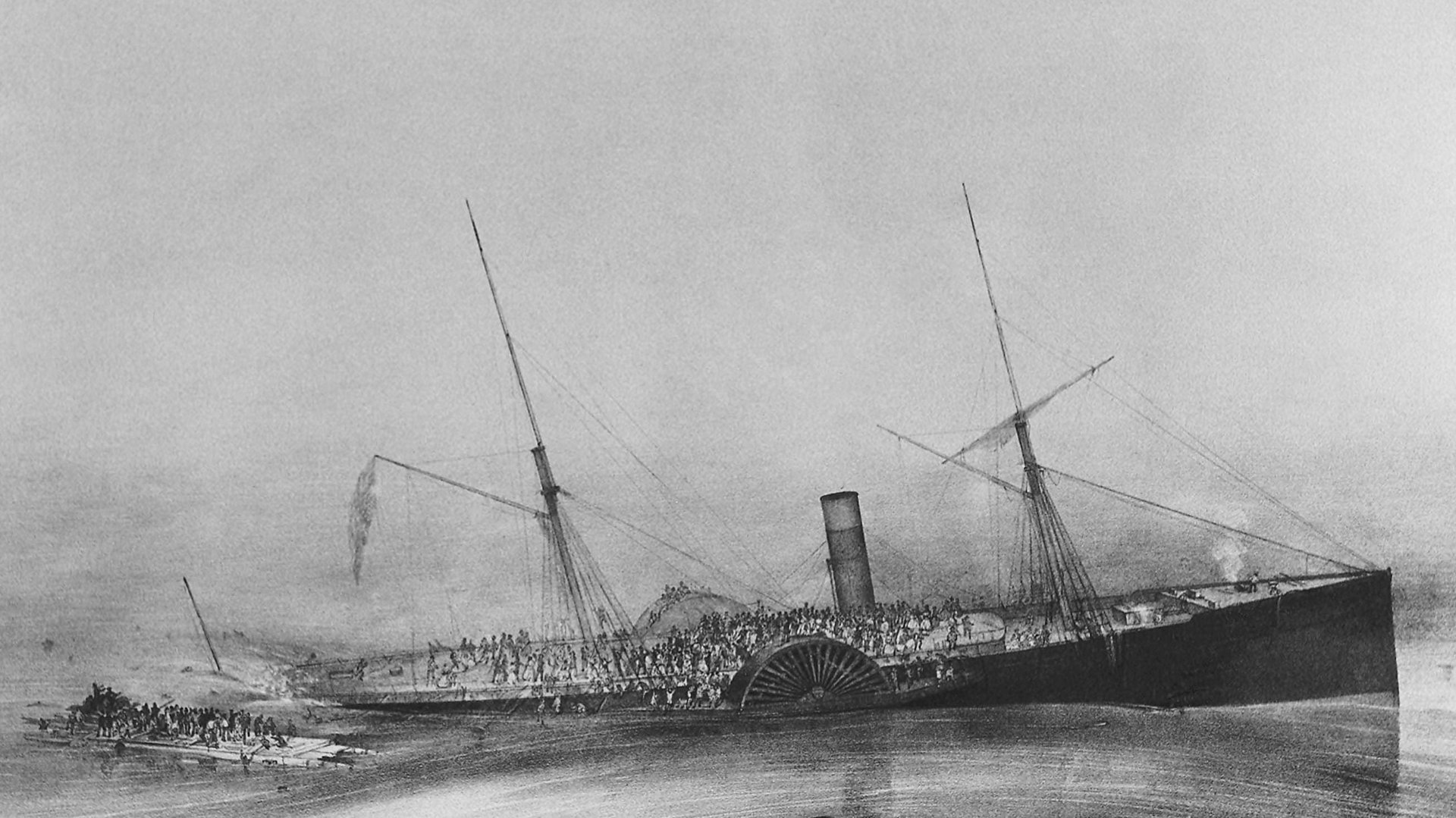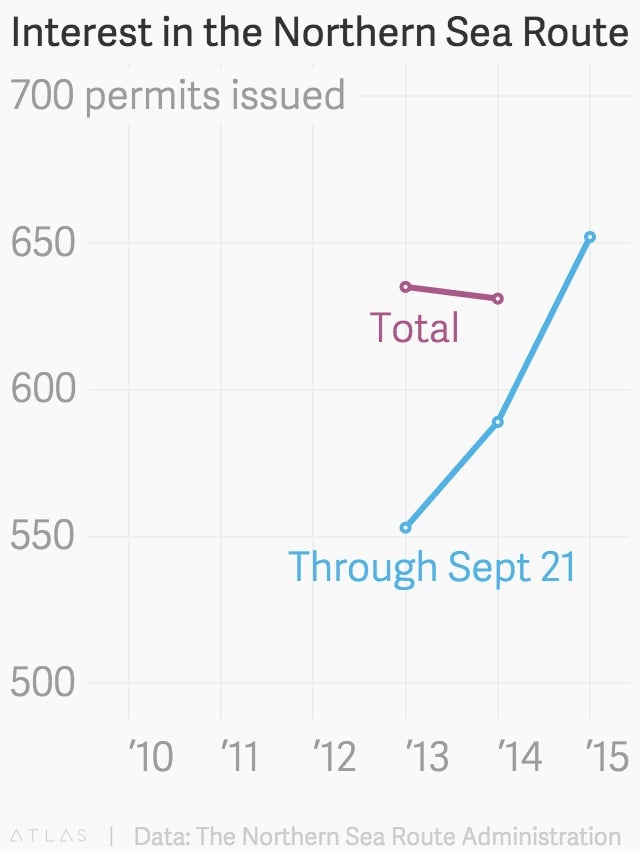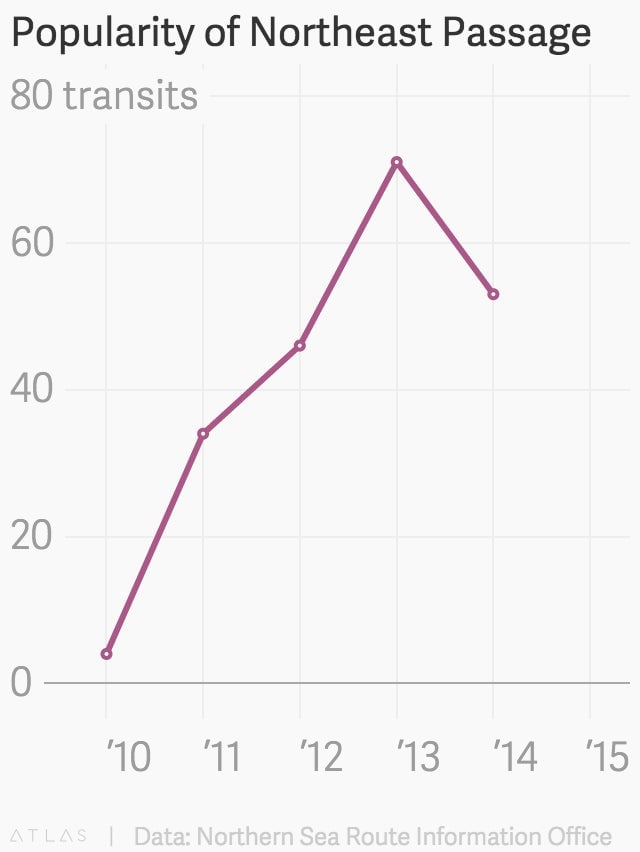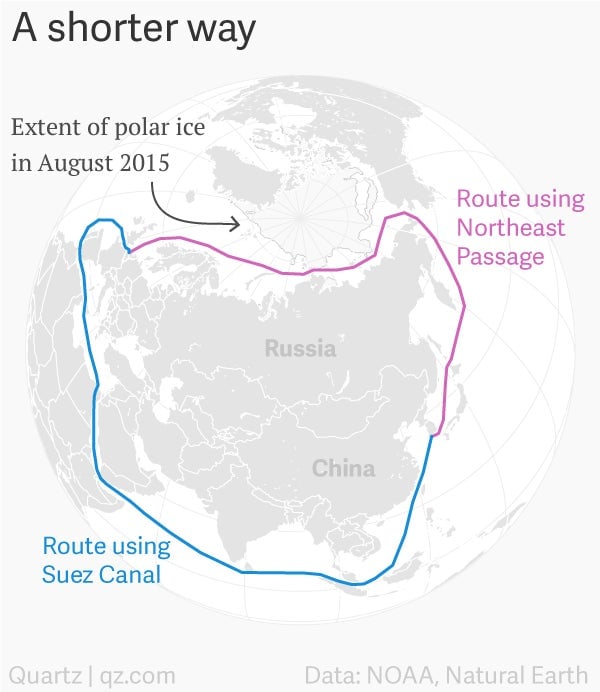A record number of Arctic-going vessels have permits to travel the ice-free route north of Russia
The Arctic Sea shipping routes north of Canada and Russia are ice-free, and a record number of ships have obtained permits for the northeastern passage.


The Arctic Sea shipping routes north of Canada and Russia are ice-free, and a record number of ships have obtained permits for the northeastern passage.

This won’t make the Arctic an ocean-going super highway. But the pieces are in place for much greater traffic.
Last year, 631 ships obtained permits for the route north of Russia and Norway, which on paper should be a much cheaper voyage than southern routes such as the Suez Canal.
But just 53 ships actually made the voyage, compared with the 17,000 traversing the Suez. (Last year’s light flow was largely a result of stubborn ice.)

This year, Russian authorities have issued permits to 652 ships, already shattering last year’s tally, which included the entire four-month season ended Dec. 31. At this point last year only 589 permits had been granted.
This is a huge change from previous years. In 2010, just four ships made the northeastern voyage.
This year, a Chinese skipper on Sept. 15 completed the first non-stop sailing voyage through the northeast passage, a 12-day trip conducted without the escort of an ice-breaker. Two days later, a Frenchman completed a voyage by rowboat through the northwestern passage. (The 3,700-mile trip took two years.)

While shipping activity may be up, it’s not clear that the ice thaw will do much to increase commerce above the Arctic Circle. Until the plunge in oil prices that started last year, the oil industry had identified the Arctic as the next frontier, igniting the beginnings of a rush to claim territory and oilfields.
More recently, though, sober heads have suggested that any major Arctic production may be decades off at best. Considerations include not only the practicalities of containing any spills, but the economics of drilling so far away from any established infrastructure. When analysts imagine the Arctic opening to drilling, they simply fail to reckon the true distances involved—even the Canadian province of Nova Scotia, for example, is only halfway from the equator to the North Pole. But the shipping industry’s increasing access to Arctic Sea routes makes it all the more tempting to think about what’s possible.